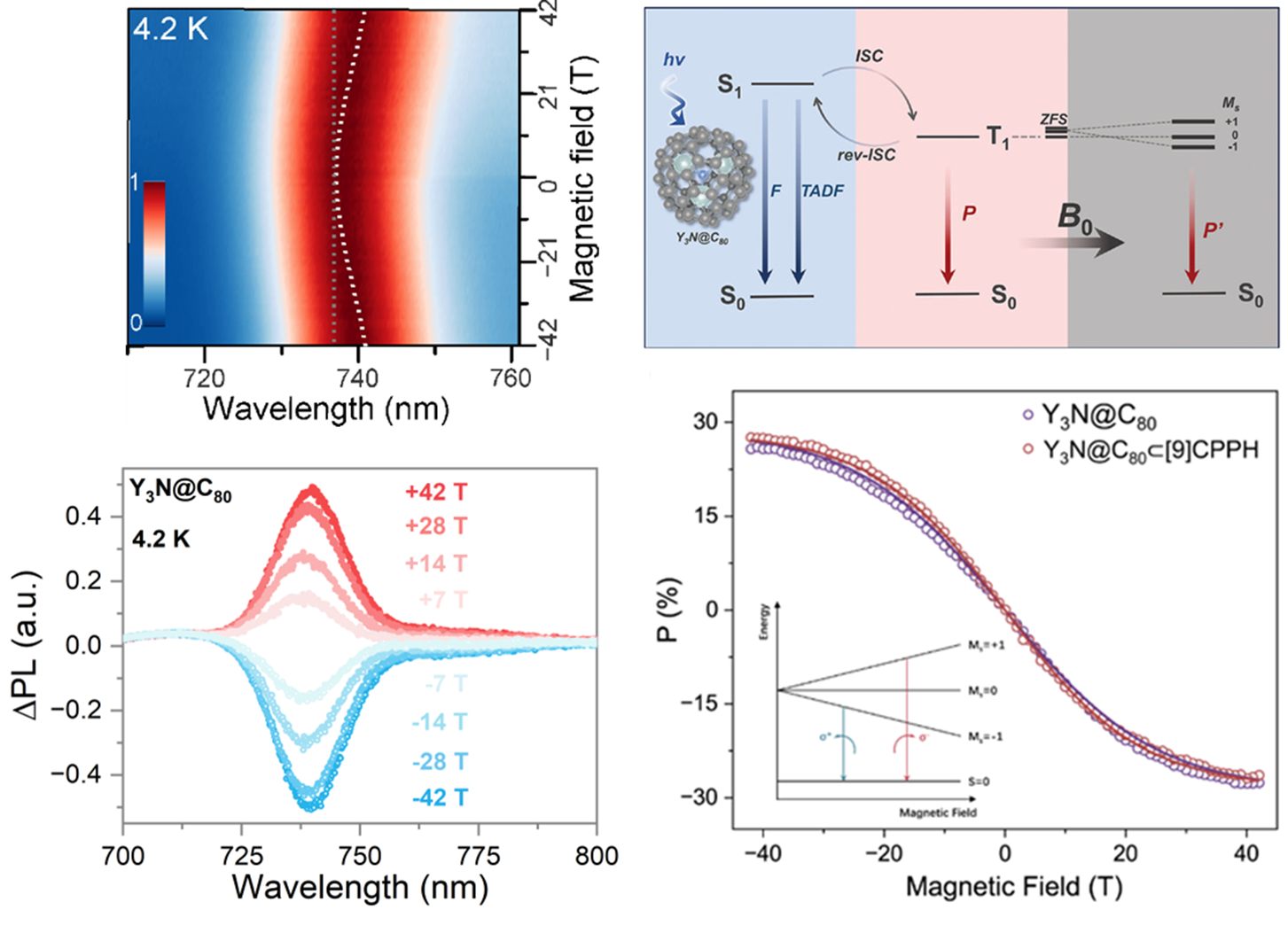Discovery of Magnetophotoluminescence Response in Metallofullerene Molecules
author: time:2024-04-25 clicks:
On April 18rd, the journal “Advanced Optical Materials” published a paper titled “Magnetophotoluminescence Response Triggered by the Triplet State in Metallofullerene.” This work represents a new advancement in the study of metallofullerene magnetic spectroscopy by the team led by Professor Wang Taishan from Beijing Institute of Technology, who is a user of the Wuhan National High Magnetic Field Science Center. Professor Wang Taishan and Professor Han Yibo from the WHMFC are co-corresponding authors of the paper, and doctoral student Li Guixian upgraded the magnetic spectroscopy measurement sample rod and completed the pulsed high magnetic field scientific measurement work.

Figure 1. Mechanism of magnetophotoluminescence response in Y3N@C80 and photoluminescence spectrum under high magnetic fields
Magnetic Field Effects play a crucial role in material science and device engineering. They are powerful tools for regulating spin polarization, charge carrier dynamics, and electronic functionalities in optoelectronic devices. One phenomenon related to magnetic fields is Magnetophotoluminescence (MPL), where the magnetic field can alter the photoluminescence of materials and devices. In semiconductor science, MPL research is commonly used to explore the fundamental properties of excitons. MPL responses can also be achieved in molecular materials because the magnetic field can influence the population of molecular excited states’ singlet and triplet states, thereby affecting the intensity of molecular luminescence. In recent years, MPL has been utilized to discover optically addressable molecular spin systems for quantum information science and spin optoelectronics. These findings highlight the importance of exploring more molecular materials with significant MPL responses.

Figure 2. Redshift of Y3N@C80’s phosphorescence emission peak and circularly polarized luminescence properties
The study investigated the MPL characteristics of the embedded metallofullerene Y3N@C80 triplet state (as shown in Figure 1). It was found that in external magnetic fields at cryogenic temperatures, Y3N@C80’s phosphorescence shifted toward longer wavelengths (as depicted in Figure 2, top), with the mechanism originating from the Zeeman splitting of the molecular spin triplet state. Furthermore, by assembling Y3N@C80with carbon nanorings as host-guest complexes, the modulation of Y3N@C80 guest’s MPL response by the carbon nanoring host was achieved. Finally, the circularly polarized properties of Y3N@C80 and its supramolecular complexes were studied (as shown in Figure 2, bottom). This work revealed that metallofullerene Y3N@C80 exhibits magnetophotoluminescence responses similar to quantum dots at quantized energy levels. Such molecular materials with MPL responses can find applications in advanced optical devices and spin-related quantum science and technology.
This research work received support from the Key Research and Development Program of the Ministry of Science and Technology and the National Natural Science Foundation of China.
Link:https://doi.org/10.1002/adom.202303334
